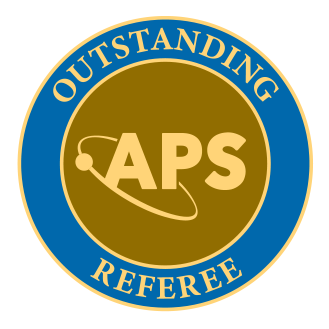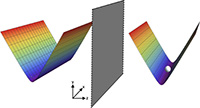| Volume 109, Issues 3 - 4 February 2024 | | Advertisement  | In this year, 2024, 156 Outstanding Referees were selected from the 91,600 currently active referees. The honorees come from over 42 different countries and will be recognized at the upcoming March Meeting. Read more. | | | | | |
Advertisement | Register today to attend April Meeting 2024! Discover groundbreaking research from Quarks to Cosmos, connect with new collaborators and longtime colleagues, and prepare for career success at April Meeting 2024. Learn more about pricing and attendance options. | | | | | | Not an APS member? Join today to start connecting with a community of more than 50,000 physicists. | | | | Editors' Suggestion Constantia Alexandrou, Simone Bacchio, Martha Constantinou, Jacob Finkenrath, Roberto Frezzotti, Bartosz Kostrzewa, Giannis Koutsou, Gregoris Spanoudes, and Carsten Urbach (Extended Twisted Mass Collaboration) Phys. Rev. D 109, 034503 (2024) – Published 5 February 2024  | The authors compute the axial and pseudoscalar nucleon form factors for 2+1+1 flavors, light, strange, and charm, with physical quark masses in lattice QCD with a controlled continuum extrapolation. The results are compared with other lattice determinations, finding good agreement, and with experimental extractions, showing some tensions. | | | | | | Editors' Suggestion José Luis Bernal Phys. Rev. D 109, 043517 (2024) – Published 14 February 2024  | The authors construct an analytic model of the line-intensity mapping (LIM) probability density field to include sources extended in angle and frequency, thus contributing to more than one observational resolution element. Preliminary simulation-based testing shows promise, encouraging further LIM development. | | | | | | Editors' Suggestion Federico Schianchi, Henrique Gieg, Vsevolod Nedora, Anna Neuweiler, Maximiliano Ujevic, Mattia Bulla, and Tim Dietrich Phys. Rev. D 109, 044012 (2024) – Published 5 February 2024  | A crucial ingredient in accurate simulations of neutron star-neutron star and neutron star-black hole mergers is the inclusion of neutrino transport and its effects on the physics and astrophysics of these phenomena. The authors implement a neutrino radiative transport scheme in their general relativistic hydrodynamics code, BAM, do more accurately simulate these mergers and map the effects of neutrino transport on the ejecta from neutron star-neutron star mergers. | | | | | | Editors' Suggestion Hugo A. Camargo, Viktor Jahnke, Hyun-Sik Jeong, Keun-Young Kim, and Mitsuhiro Nishida Phys. Rev. D 109, 046017 (2024) – Published 27 February 2024  | The authors study spectral and Krylov complexity in quantum billiard systems at finite temperature. They show that spectral complexity may be used to probe the transition between the chaotic and integrable configurations for the billiard systems. For Krylov complexity, they study the associated Lanczos coefficients showing that their growth rate satisfies the conjectured generalized chaos bound, and that they produce an exponential growth of the Krylov complexity at early times. | | | | | | Editors' Suggestion Letter M. Fabbrichesi, R. Floreanini, E. Gabrielli, and L. Marzola Phys. Rev. D 109, L031104 (2024) – Published 23 February 2024  | The authors use data from the LHCb collaboration for the helicity amplitudes in the B0 –> J/ψK*(892)0 decays to compute the entanglement among the polarizations of the final vector mesons. They show explicitly that the Bell inequality is violated, in accord with the general principles of quantum mechanics. | | | | | | | |


No comments:
Post a Comment